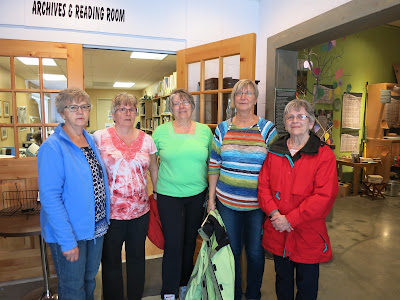Larry Loyie
 |
| Constance and Larry - Book launch at the Peace River Museum 2014 |
Author, philosopher, gentle Cree man
It is with sincere sadness that we convey the news of Larry Loyie’s passing April 18, 2016. As staff of the Museum and Archives, we had the pleasure of knowing both Larry and his partner and co-author Constance through book launches of his acclaimed titles and through their visits when they travelled in this part of the northern boreal forest. Often the visits would coincide with travels to our regional schools to share Larry’s stories with the children, which was always a great pleasure of Larry’s.
Larry was born in Slave Lake and spent his childhood living
a traditional Cree lifestyle with his family until he was taken to Grouard to
the St. Bernard Mission residential school. Through this experience, his education
was disrupted and it was not until he
was 50 years old that he returned to school to fulfill his lifelong goal to
become an author – and what an expressive author he became.
Together, he and Constance published numerous books about
the Aboriginal culture and heritage of northern Alberta. As an author and a
speaker, he spoke gently but firmly about the impacts of the world war, the
teachings of Elders, the residential school system and the importance of
treating everyone with respect. Throughout his writings, his gentle nature, his
humour as well as his seriousness, communicated to the reader his strong
respect for his Cree culture and heritage and his open mind and optimism for
tomorrow.
The last time we saw Larry and Constance was at
Donnelly, Alberta at the Société
historique et généalogique de Smoky River where they had come to thank
the volunteers at the centre for their help with researching their book
Residential Schools - ever acknowledging people who supported them. I believe
Larry Loyie’s legacy will be in having sown seeds for a kinder and gentler place
for us all to live in.




